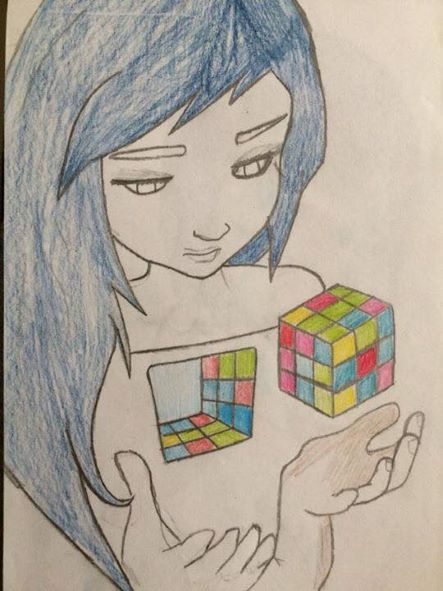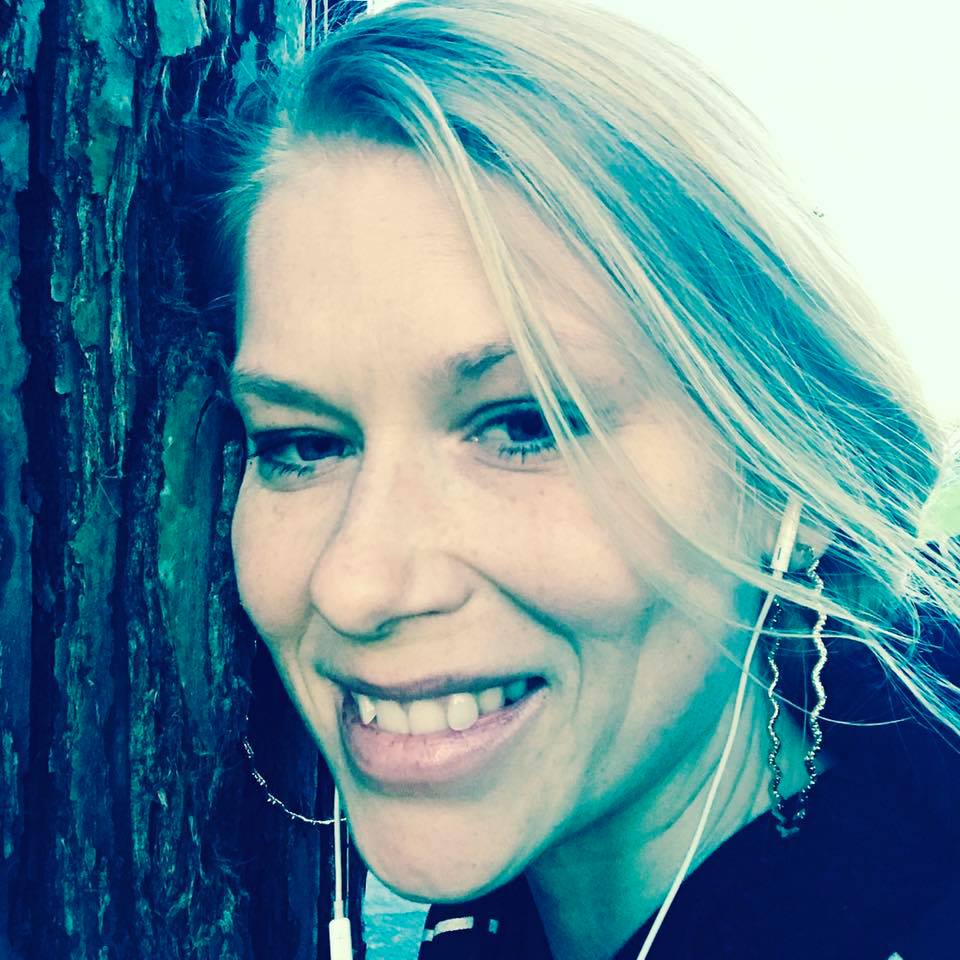FUNDAMENTAL FLAWS WHEN DEALING WITH CONFLICT (#2 in Article Series)
The magic of Awareness + Acceptance of What Is—before looking for fixes and solutions

The magic of Awareness + Acceptance of What Is—before making changes . In article #1, the fundamental flaw when dealing with conflict we explored was the mistaken focus on solving the problem before exploring and softening the emotions.
In this article, we explore the power of simple awareness of What Is in this moment as a path to dissolving conflict and emotional distress. Bring awareness first, before attempting to solve or fix the situation, the other, or yourself.
Inseparable and obvious to me, but not-so-obvious to others, is that along with awareness you also must add acceptance of What Is in this moment. Let me give you an example.
My former wife (and now good friend), Noel, and I were passionate about having good communication when we were together. Once we were tangled up and not feeling good about an interaction. Noel had done something that I was upset about. We weren’t making any progress. Finally, Noel asks me with pure curiosity, “ What do you want? ”
I looked within to see what I wanted. It occurred to me that I wanted her to suffer as much as she just made me suffer. (This is the awareness of what is .)
I was a bit embarrassed when I realized that that was my motivation. I had a moment of figuring out how I might rearrange my truth so I didn’t look like the bad guy, but decided to scrap that idea. I had learned that awareness is the first step to change—whether that change be a different action, or a different attitude or emotion, or both. So, I was on the right track by being aware of myself.
Now just awareness of What Is isn’t the entire piece. One must bring to the awareness an acceptance of what is in this moment . So, I dropped my initial judgment of my pettiness because I knew there is always a good but hidden reason why anyone is the way they are. I accepted that in this moment, the way it is… IS the way it is. It can’t be ANY different in this moment than the way it is. I sheepishly said to her, “ I want you to suffer the way you made me suffer .”
Now if Noel was one to judge, instead of accepting the way it is in this moment, we might still be at a standstill. But Noel also the value in awareness and then accepting what is in the moment.
Her response? She giggled. Then we both began laughing. And that magically resolved whatever issue we were dealing with.
Most people keep trying to fix or change the other person or the situation before being aware of what is going on, and before accepting that the way it is in the moment is the way it is in this moment and it can’t be any different—in that moment. Also, the way each person is in that moment is the way they are--and can't be different in that moment.
The cool thing about awareness and acceptance is that sometimes getting to awareness and acceptance is the end of the work. Things often magically rearrange themselves. They transform before your very eyes. If the distress doesn’t release right away, whatever else is needed to feel resolved is made much easier by bringing an attitude of valuing awareness and acceptance.
Counter-instinctual for the survival brain
Now this approach is counter-instinctual for the survival brain. The survival brain sees a problem and then starts to look for the change that will be the solution. The survival brain is trying desperately to get out of the discomfort of the emotional distress by fixing the problem. Unfortunately, the focus on changing the situation or the actions/attitudes of the other person, or of oneself, typically mires you in the conflict and emotions.
What you resist, persists. Said another way, when you don’t like some result/attitude/action/emotion and are fighting against it, somehow your resistance keeps it around. So, the initial goal is to accept and allow what you might initially resist.
Byron Katie has been teaching this for the last 25 years. One of her books is entitled, Loving What Is . She has a very good worksheet on her website that a person can use when they’re upset and are locked in judging. It’s entitled, Judge Your Neighbor Worksheet . http://www.thework.com/downloads/worksheets/JudgeYourNeighbor_Worksheet.pdf
What am I to become aware of,
and how does ‘awareness and acceptance’ dissolve conflict and emotions?
Below is a communication I send to many of my new clients:
One of the key things I’ll be looking for in our work together—and it’s required for things to turn around—is for each person involved to discover what part or parts they have played in contributing to the distress and problems.
It doesn’t matter how small or insignificant your part may seem in comparison to what the other person(s) may have done. The key is that you take responsibility for the part YOU played.
I operate from the perspective that each person is 100% responsible for the unpleasant challenges and the breakthroughs in a relationship. So, each person has ultimate personal power to turn things around. Your ‘taking responsibility for your part’ is crucial for this relationship and for our coaching to be successful.
By ‘responsibility’ I am not talking about you being harshly judged, blamed, faulted, or made to be the bad guy. ‘Taking responsibility’ has nothing to do with that. If you view responsibility as finding fault, you have a disempowered view of responsibility.
What I’m referring to with the notion of responsibility is that you have played a critical part in things going south. When you get clear on how you have done that—and have some compassion for yourself about what you’ve done—you have become empowered.
I will be assisting you in discovering your part because often our part is hidden from our awareness.
Starting the ‘exploration into awareness and acceptance’ process
When we start the 'exploration into awareness and acceptance' process, there are 2 arenas that we are working to become aware of and to accept. The two arenas listed below involve helping the other, or helping yourself, to become aware of, and to understand, oneself:
1.What are my attitudes and actions that are contributing to my distress or the other person’s distress?
2.Where did these attitudes and actions stem from (i.e., where did they originate)?
In most emotionally distressing situations, unpleasant experiences from the past are coloring our reactions. Although the past unpleasant experiences may be adult past experiences, they’re primarily childhood experiences. To grasp this concept better, you may want to read the first few chapters of Harville Hendrix’s masterpiece of a book, “ Getting the Love You Want” .
An example of how to take responsibility for your part in the distress
Let’s say your partner has had an affair. Yes, it’s clear that an affair is unacceptable. Cheating is unkind and disrespectful behavior.
However, if the person who was cheated on doesn’t look for and discover his or her part in what lead up to this affair, the person continues to feel they’ve been a complete victim. When a person feels they have been victimized and they played no significant part, the person keeps him or herself in a position where they are powerless to free themselves from their emotions. And they are powerless to make better decisions. They will likely continue to do the same things in a next relationship--with similar or somewhat similar unwanted results.
How could a person who was cheated on have any responsibility for their partner’s affair?????
When a couple comes to me about an affair, I am always interested in not only the details of the affair, but in what led up to the affair occurring.
There are a number of ways in which the one who was cheated on could hold some responsibility. One common theme I see is where the person who was cheated on was a conflict avoider. They avoided talking about key issues that needed to be addressed in the relationship, and they suppressed or shut down their partner when their partner tried to bring up important issues. This blockage led to periodic blow-ups and/or to emotional distancing—leading to: not feeling emotionally connected, conversing less, having less sex and affection, and spending less and less time together. A person becomes unhappy in this environment. When a bright shiny object comes into their world, it can be hard to resist. It’s not the right move to explore the bright shiny object, but nonetheless, this is what happens. It is the way it is.
Was the partner cheated on at fault for the affair? No, it’s not about fault and blame. It’s about taking responsibility for one’s part :
“ Yes, I avoided important problems we were having, and I shut down my partner’s attempts to communicate about them with me. This led to us not feeling good with each other. And it contributed to an environment that led to the eventual affair. I take responsibility for creating an environment that led to the affair. Yes, affairs are unacceptable, and I need to have assurance that this won’t be happening again. And, I will change my attitudes and behaviors around dealing with conflict and emotions .”
Another common scenario is that the partner who was cheated on saw red flags all along—even in the very beginning of the relationship. (Your partner cheated on their prior partners. You caught them flirting or sexting with someone. They were secretive. They got excessively angry when you questioned their suspicious behavior.) You saw the red flags but didn’t take corrective action. You failed to take corrective actions for any number of reasons. These reasons are usually related to past conditioning (particularly childhood). What’s needed is to find out what led to you not taking corrective actions, and to own your part in the trouble.
The crucial but hidden influence of your past
Almost all our unworkable attitudes and behaviors are directly related to the influence of our past experiences. It’s particularly the unpleasant experiences that negatively affect our present-day self. And it’s particularly our childhood experiences.
This concept is crystal clear for some people, but doesn’t make sense for those who haven’t been exposed to the idea. I’ll provide an example to help you understand the influence of our childhoods.
Let’s say the person above who was cheated on and who avoids conflict was a 4-year-old child who thinks he is responsible for his parent’s fighting and arguing. Maybe the parents said that taking care of a child is a burden and is causing their distress. Maybe the child just assumed he/she was the problem. Whatever the case, the child may then believe that he/she is a bad and unacceptable person.
Any number of beliefs/attitudes and patterns of behavior could come from this experience:
·I’m responsible for my parents fighting and divorcing. I am thus not worthy of being loved by anyone.
·I’m a problem to others.
·I’m unwanted.
·Anger and arguing is scary and leads to bad things. (Fear of anger).
Note: A child’s brain has not developed the ability to reason with logic, so illogical beliefs go unchallenged. This is one reason why early childhood experiences are so ingrained. It is also why it is important to bring self-awareness first before attempting to solve a problem. You need to be aware of the mistaken beliefs and attitudes that you have carried with you because of the past.
So, these are the attitudes the child believes to be true. For the child, this is truth. Then, actions fall out of these attitudes.
Let’s take one attitude: the fear of conflict and arguing. This fear can lead to any number of dysfunctional actions:
·Becoming a conflict and anger avoider as an adult. Will do anything to avoid facing one’s anger. Will do anything to please another so they don’t get angry. Will do anything to prevent another from expressing anger.
·Avoid emotional connection and emotional intimacy with others. If you get too close, there will be anger.
·Avoid relationships in general. Being independent. Isolating oneself. Pushing good relationships away.
·Try to control every thing and every one in an attempt to keep everyone from being angry and upset.
You can see that these behaviors, which are spawned from childhood beliefs, create very dysfunctional ways of operating in life. And we’re only talking about one belief. There are scores of core beliefs that are unseen and have been unchallenged.
Bringing awareness and acceptance, instead of change
In this example, one could utilize the typical approach of ‘trying to make changes’--try to get the person who is afraid of anger and conflict to stop being a pleaser, or to listen when their partner is annoyed, or to deal with conflict, or to stop hiding out and become more social, or to be more emotionally expressive, or to stop being so self-sufficient and allow others to contribute to you, or to stop being so controlling of everything. But we’ve all tried that approach thousands of times--the approach of making changes. Sometimes it works somewhat, but typically it doesn’t help at all.
This unique new approach focuses first on awareness —awareness of my beliefs and my actions that are creating problems, and awareness of where these dysfunctional beliefs and actions originated.
Awareness becomes powerful in the resolution of conflict and difficult feelings because you have now brought your conscious and rational self on board vs operating from a subconscious 4-year-old.
You can also bring compassion and understanding to that 4-year-old. You may even grieve for what that child experienced. And you may find forgiveness for why you have acted the way you have in life. And you may even find forgiveness for those who weren’t good to you as a child because you see that they were also operating out of their 4-year-old who was in pain. Sometimes there are a number of steps to take in the process of getting to a peaceful place. Sometimes it happens automatically once you have become aware and have brought acceptance to what is present in the moment.
Eckert Tolle wrote the massively popular book, The Power of Now . His work is all about awareness and acceptance of what is present in the now. And being with it. Sitting with it. Allowing it.
So, some resolutions are obvious and sometimes desired changes occur easily, even instantly:
“ Oh, I see that my ‘avoiding telling others about what I’m unhappy about’ creates big conflict in me, and then later on my avoidance creates big conflict in others. Oh, and my judging my loved one’s anger or annoyance, plus my ‘shutting down their need to express their feelings’ actually makes them REALLY mad at me. And if this goes on, I’ll find myself divorced, or my partner might have an affair, etc. Well, then let me find an acceptable way of operating in life where I allow the healthy expression and resolution of unpleasant feelings .”
Sometimes the changes that are to be made are obvious, and sometimes the changes are not as obvious or easy. But in this awareness + acceptance process we have first brought awareness to where the problems are coming from. And we have brought compassion and understanding for our dysfunctional attitudes and behaviors. And we have faced our emotions, instead of running from them. These are all important first steps for resolving emotional distress. Changes, fixes, and solutions can be more easily found or created when one isn’t reeling in emotional distress.
The bad news is that most of us are relatively clueless about how to explore our inner selves (thoughts, feelings, memories). 99.999% of us humans need guidance and assistance. Even those who have skills often need assistance to see their blind spots. The other bad news is that even the professionals are often lacking in adequate skills. We’re in the beginning stages of human evolution in this respect.
In summary, ‘awareness + acceptance’ is crucial before we start fixing problems. It will feel unnatural to go down this path of becoming aware before we start trying to fix a problem. It is natural to jump into finding solutions right away. So, we must will ourselves to focus on bringing awareness and acceptance to what is, until the focus on awareness becomes a new habit. Problems and emotions resolve themselves much more easily when there is awareness. Many times, resolution of issues happen like magic.
For more exploration on ‘bringing awareness’ vs ‘fixing problems and making changes in behavior’, see: The Hakomi therapy method http://hakomiinstitute.com and/or read the book Grace Unfolding by Greg Johanson and Ron Kurtz
For a closer look at our fear of anger and how that shows up in our lives (plus some remedies), see the article on my website: https://www.thehealthycouple.com/articles#FearofAnger
[COMMENTS on this blog post can be made by scrolling down just a bit. Your suggestions and editing—pro or con—are very welcome.]
COPYRIGHT Bill White 12-17-18
www.thehealthycouple.com Phone520-775-1943
Healthy Couples Blog



















